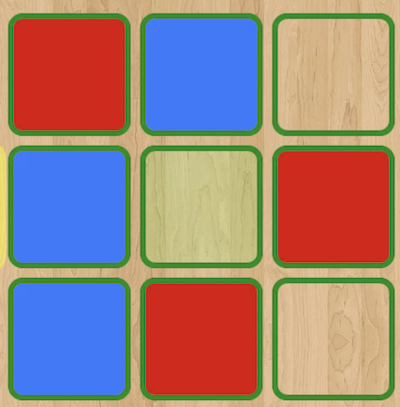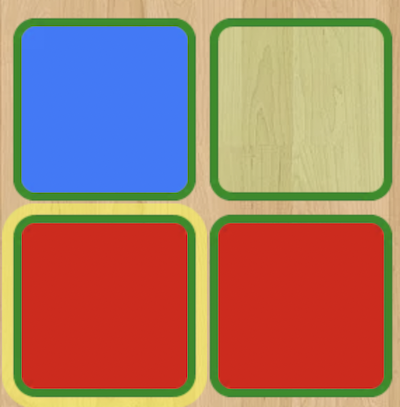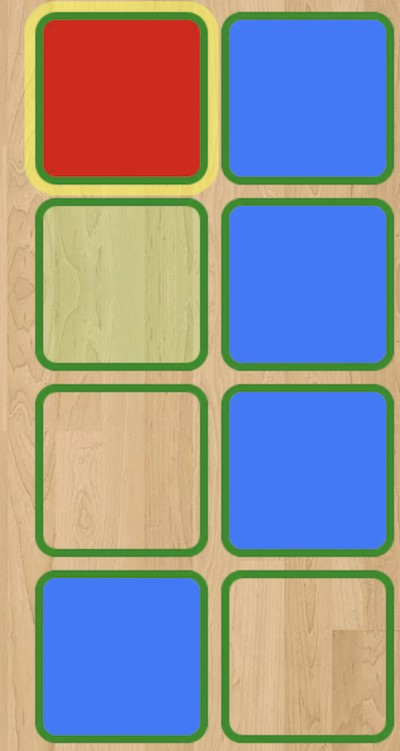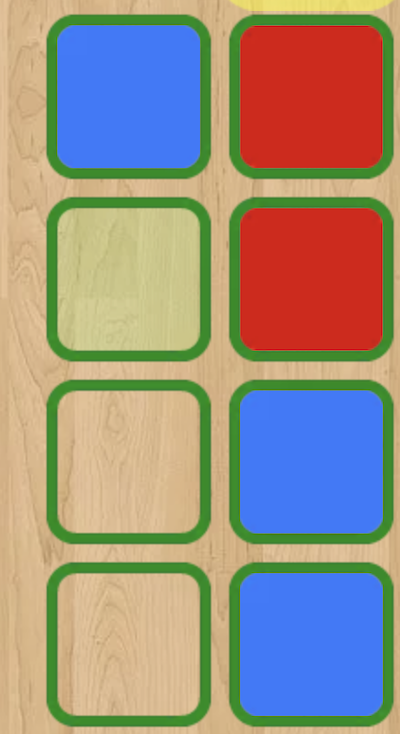This is a documentation for Board Game Arena: play board games online !
Tips hadron
Hadron is a drawless two-player game where you win by playing the last move. In Hadron, in every board position, both players always have the same set of legal moves. This means that the game will always come down to the last move and you can't necessarily win by claiming points or areas in games like Amazons or Go etc.
However, there are ways to gain advantages on the board, similar to claiming areas and points in other games. You can create small areas of the board where you are guaranteed to have the last move, and these behave like an advantage or points in some ways.
There are also small areas where either player can get the last move by moving first.
Let's look at some common positions that appear in the late stages of a Hadron game to get a feeling for who might be winning in the overall position. We can also look at how the overall situation changes as these positions combine together. We can also look at how to create or destroy such positions to form an early-game strategy.
Endgame
In Hadron it can often be the case, that near the end of the game, the board splits up into disconnected parts that no longer affect each other. Assume that in the given examples, no new moves can be created outside the area where there is a legal move to begin with.
Stars or Parity
The simplest of these are areas where only one move is left available to either player and no new moves are created afterward. For simplicity lets call these kinds of moves stars. This can happen when the point is completely surrounded in the center of the board or in the corner but also in other situations. Some examples are shown below. Note: This is not an exhaustive list.
If these are the only types of moves left to play on the board, then the winner is determined by simply counting the available moves left. On your turn you want there to be an odd number of stars left, while on the opponent's turn you want there to be an even number. This way you will guarantee yourself the last move. Since you want to play last, you need there to be 1, 3, 5 etc moves left, while you want there to be 0, 2, 4 moves etc for your opponent left. Some players call this evenness or oddness the parity of the game.
A good parity for you is odd on your turn, even on your opponent's turn.
Mentally you can cancel off pairs of these points since it's only where there is an even or odd number left that matters. You can think of it like +1 for the player to move if there's an odd number, or 0 if there's an even number.
Corridors
It can happen that on part of the board one player can always guarantee themselves the last move, in some cases letting the opponent play multiple moves in a row while playing elsewhere. Abstractly it makes sense to call them corridors because in a special case they can look like a straight line of empty points.
For example in the image below which is at the edge of the board, Blue can always play the last move in this area. They can play first and it will be the last move, or they can let Red play either 1 or 2 moves here and still get the last move.
Example corridors on a 5x5 board:
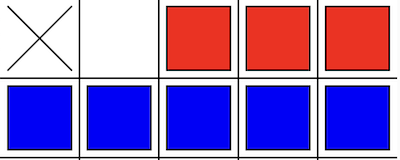 This is like a +1 to Blue as Blue can always play the last move here, playing first or second.
This is like a +1 to Blue as Blue can always play the last move here, playing first or second.
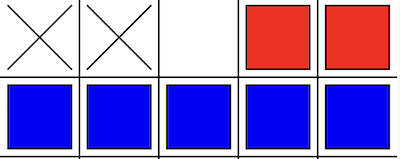 This is like a +2 to Blue as Blue can let Red play twice in a row and still get the last move here.
This is like a +2 to Blue as Blue can let Red play twice in a row and still get the last move here.
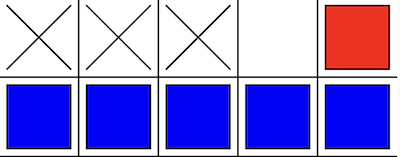 This is like a +3 to Blue as Blue can let Red play three times in a row and still get the last move here.
This is like a +3 to Blue as Blue can let Red play three times in a row and still get the last move here.
A useful thing about the corridors is that they are a way for you to control the parity of the game. If the parity is good, then you don't need to change it. If the parity is bad, then you can play in your corridor to close it and give the opponent the bad parity, that is play the last move in the corridor area.
Corridor plus stars
In a game where there is only a corridor left and one (odd) or two (even) number of stars, there is a winning strategy.
In the even case, on your turn the parity (even) is bad for you, so you should close the corridor and give the opponent the bad parity.
In the odd case, on your turn the parity (odd) is good for you, so you should play one of the stars leaving bad parity (even) for the opponent. If your opponent plays the corridor you can answer and close the corridor and the parity is bad for the opponent. If your opponent also plays a star, since there was an odd number you can keep repeating this step.
Early Game
(to be added)
